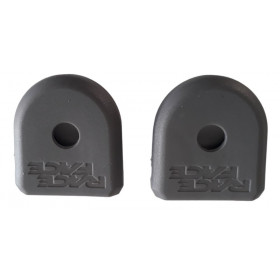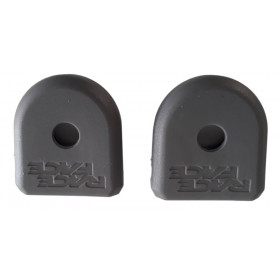-
 New product -60%Carbon cranks boot Race Face grey
New product -60%Carbon cranks boot Race Face grey- €6.00
- €14.99
-
 New product -60%Carbon cranks boot Race Face Sram Shimano grey
New product -60%Carbon cranks boot Race Face Sram Shimano grey- €6.00
- €14.99
Showing 1-2 of 2 item(s)
The crankset on a downhill (DH) mountain bike is a crucial drivetrain component that transforms the rotating motion of the pedals into propulsion of the bike. Here is a description of its function, its characteristics and the associated standards:
Function :
1. Power transfer:
The crankset transfers the force exerted by the rider on the pedals to the chainrings, which then drive the chain and move the bike forward.
2. Speed variation:
Although modern downhill mountain bikes often feature single-chainring drivetrain systems to reduce weight and complexity, some models may still have multiple-chainring setups to accommodate different terrain and riding preferences.
Features :
1. Number of trays:
Downhill mountain bike cranksets can be configured with one, two, or three chainrings, although single chainring configurations are more common in this discipline. A single chainring reduces weight, simplifies transmission and minimizes the risk of chain snagging during fast and aggressive descents.
2. Size of trays:
For single chainring setups, chainring size is important in determining the range of speeds available. Larger chainrings provide higher speed, while smaller chainrings make steep climbs easier.
3. Bottom Bracket Compatibility:
Downhill mountain bike cranksets must be compatible with the type of bottom bracket used on the bike. Common bottom bracket standards include BSA threaded shell, PF30 press-fit shell, BB92 press-fit shell, among others.
Standards:
1. Bottom bracket interface:
Downhill MTB cranksets can be equipped with different bottom bracket interfaces, such as the ISIS standard, the Octalink standard or the Hollowtech II standard. It is important to choose a crankset that is compatible with the bottom bracket interface of the bicycle frame.
2. Diameter of the trays:
Downhill mountain bike cranksets may have specific chainring diameters depending on the manufacturer and model. Common chainring sizes can range from 30 to 36 teeth for single chainring setups.
In summary, the crankset of a downhill mountain bike is a crucial part of the drivetrain that helps transfer power from the rider to the bike's wheels. With different features and standards available, it is important to choose a crankset suited to your specific downhill riding needs and riding style on technical and demanding courses.
